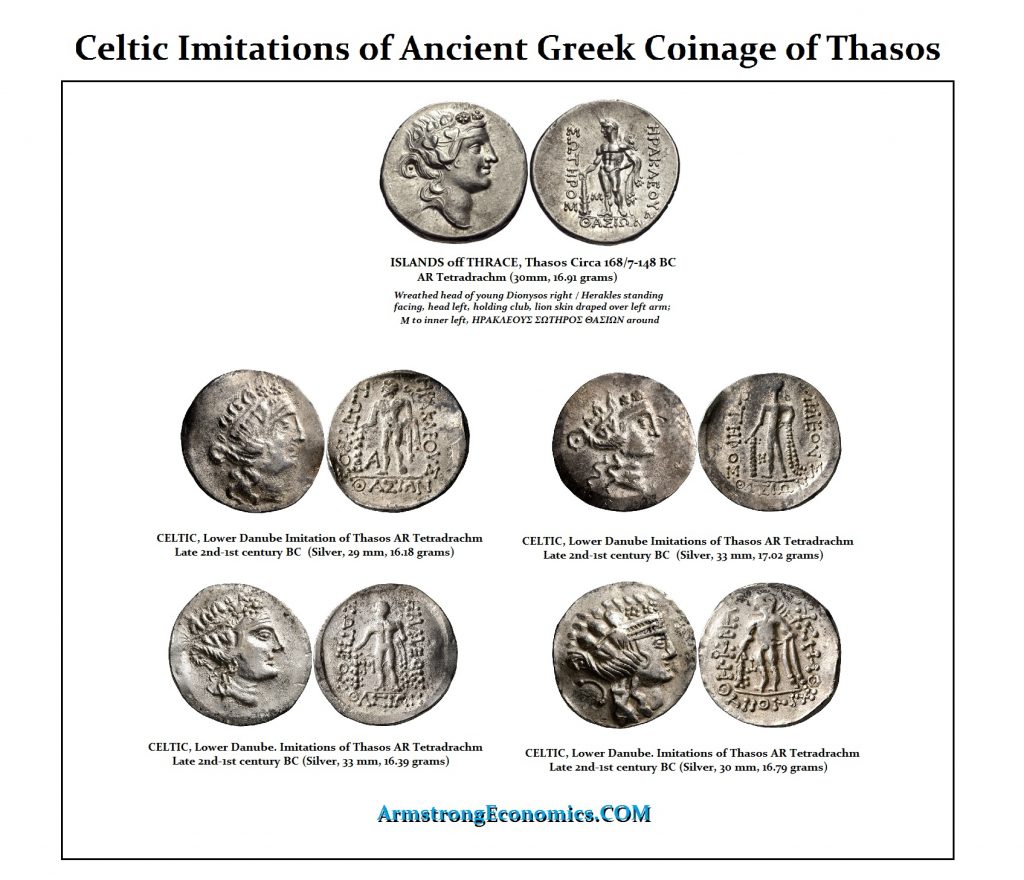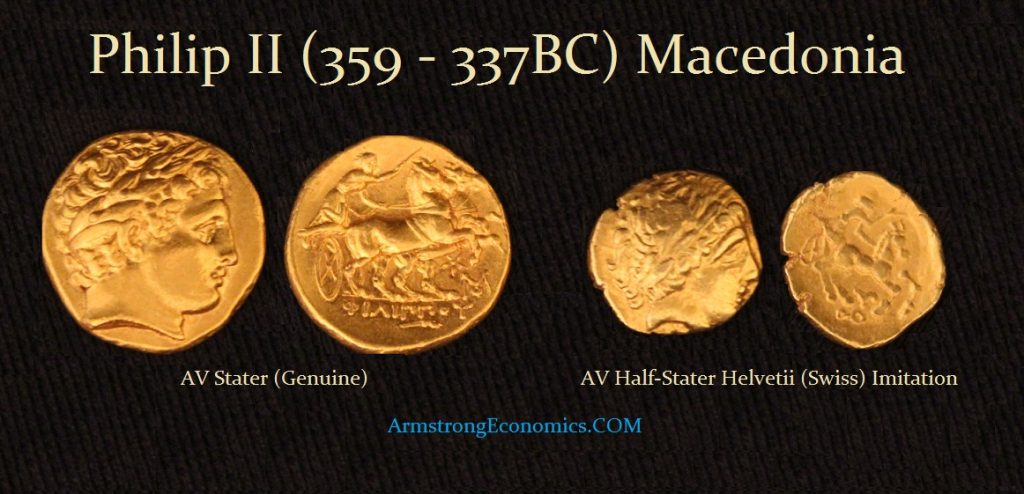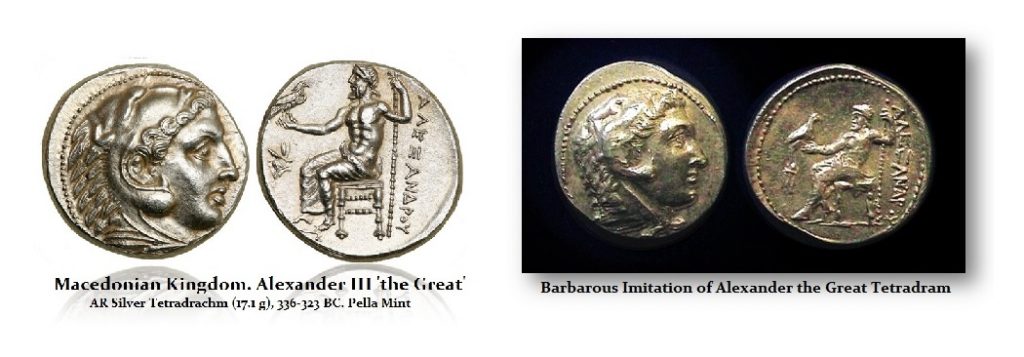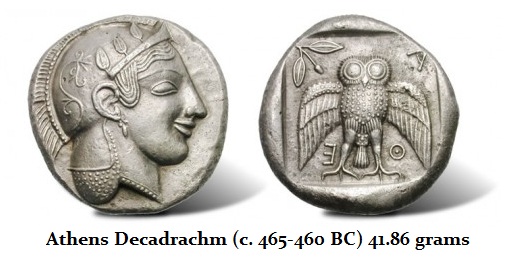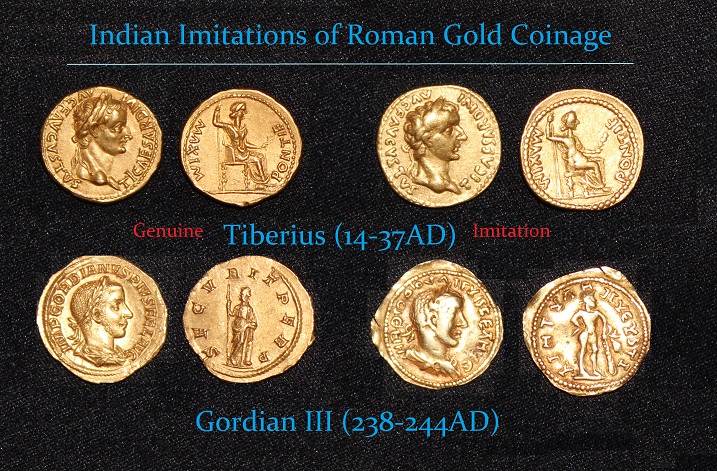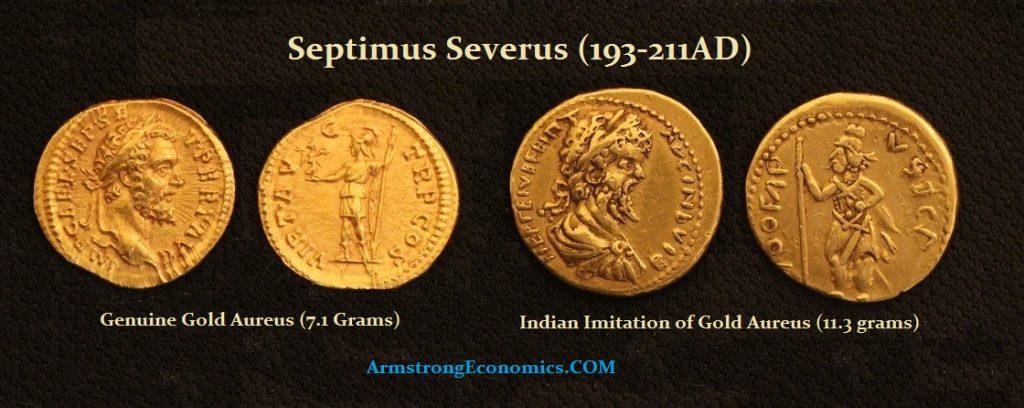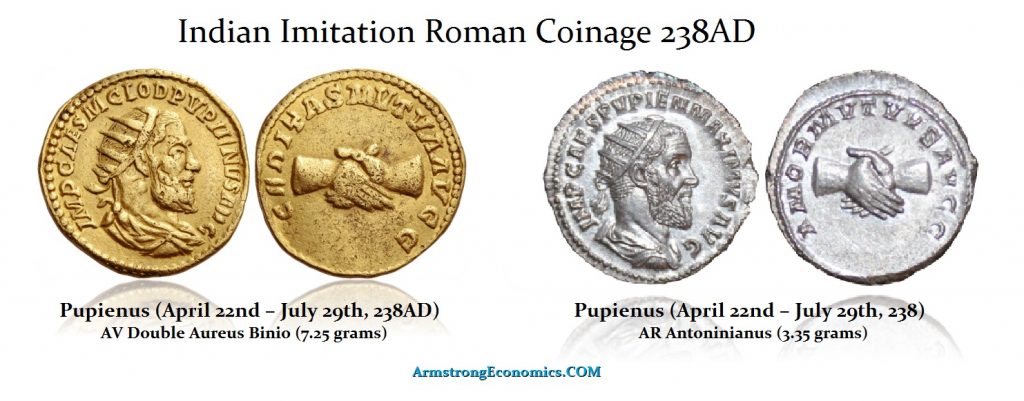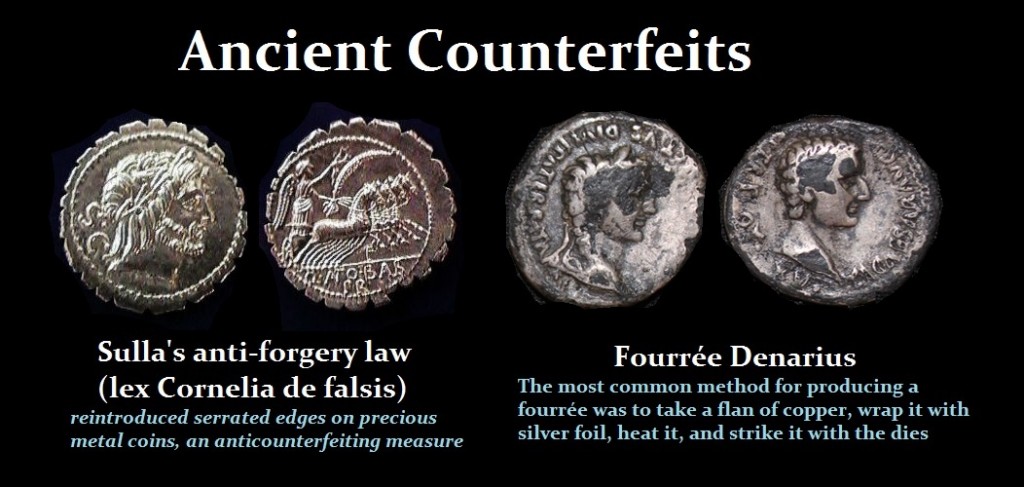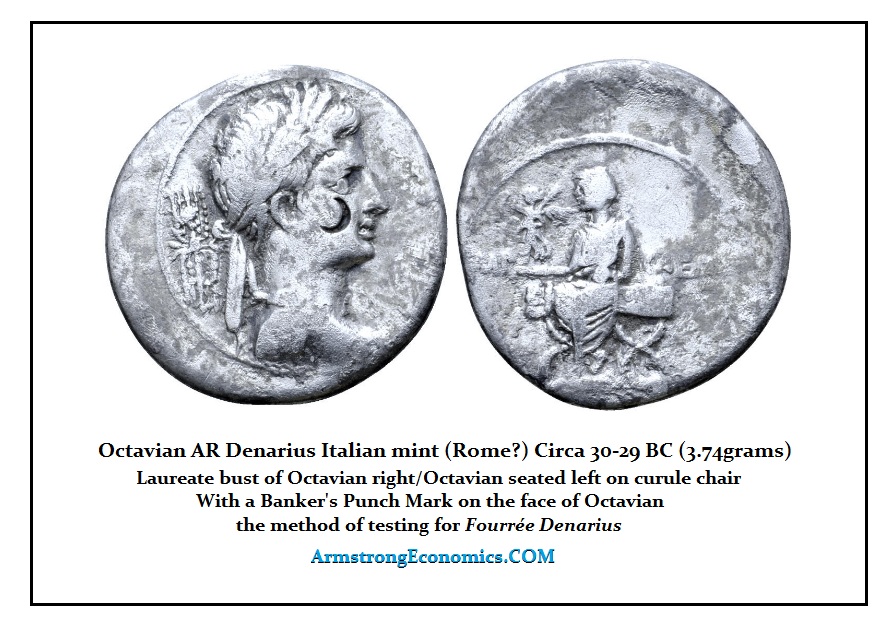Precious Metals were Worth Less than the Coinage
QUESTION: Mr. Armstrong; I do not understand your statement that even when coins were silver and gold, they were still a form of fiat money. Could you explain that please?
BB
ANSWER: The evidence that supports that statement is abundant. We find coins of the immediate financial capital be it Greece or Rome, were IMITATED by the surrounding peripheral regions. Here are four Celtic imitations of a silver Tetradrachm of Thasos, an island in Thrace. Because of its proximity to the Celtic world, they were engaged in trade. However, the Celts minted imitation coinage copying the designs as best they could to satisfy their own internal commerce. You can see a genuine coin at the top with a weight of 16.91 grams and four imitations that were very close to the same metal content. Obviously, the raw silver was worth more when it was in coin form or they would never have bothered to imitate the Greek coinage.
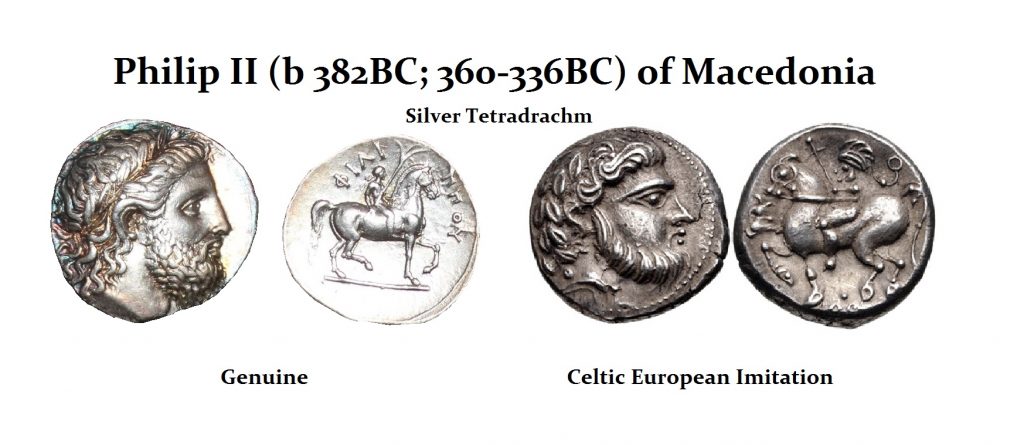 There are imitations by the Swiss of gold coins of Macedonia made by the Helvetii tribe. In this case, they appear to be half denominations. These were imitations of Philip of Macedonia, the father of Alexander the Great. We also see the Celtic imitation of the silver tetradrachms also of Philip. The style is very distinctive being Celtic. They used the design of Philip II as their model.
There are imitations by the Swiss of gold coins of Macedonia made by the Helvetii tribe. In this case, they appear to be half denominations. These were imitations of Philip of Macedonia, the father of Alexander the Great. We also see the Celtic imitation of the silver tetradrachms also of Philip. The style is very distinctive being Celtic. They used the design of Philip II as their model.
Here is an imitation of a silver tetradrachm of Alexander the Great. This one comes from Georgia, Azerbaijan, Southern Russia region. Once again, we see always the peripheral regions imitating the coinage of the main central economy. This is why the US dollar circulates around the world in physical form from China to Russia.
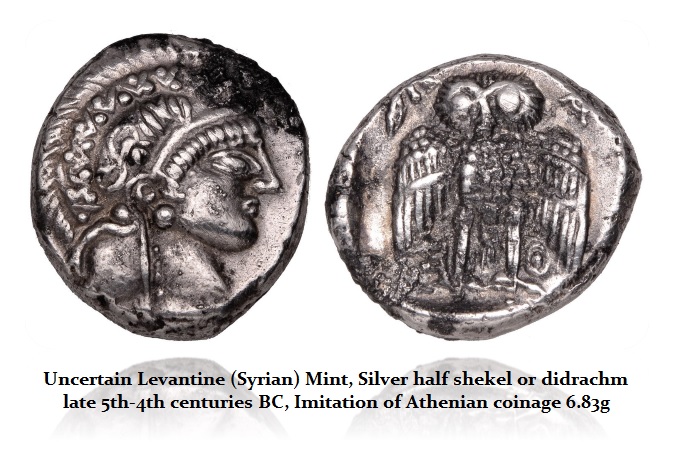 We find imitations of the famous Athen’s Owls. These type of imitations are dominant in North Africa. Here is a SILVER DIDRACHM which is style off of the main trade coin being the Dekadram. This design of the facing owl with open wings only appeared on the large Dekadrachms and not on smaller denominations.
We find imitations of the famous Athen’s Owls. These type of imitations are dominant in North Africa. Here is a SILVER DIDRACHM which is style off of the main trade coin being the Dekadram. This design of the facing owl with open wings only appeared on the large Dekadrachms and not on smaller denominations.
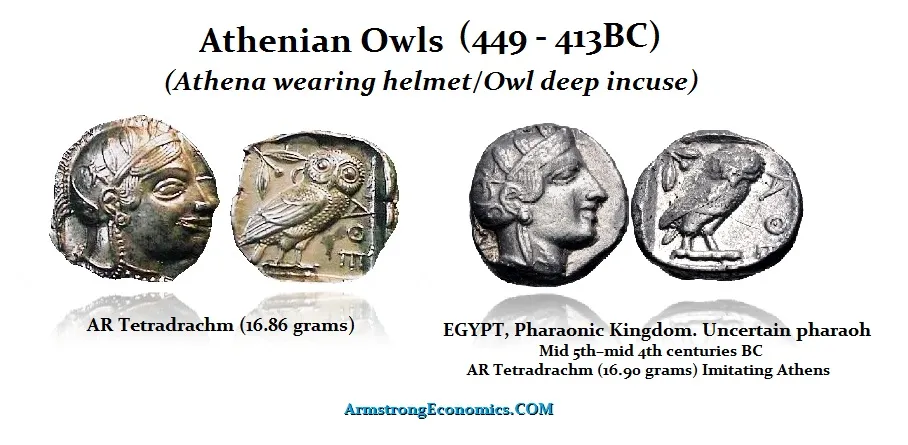 Interestingly, the Egyptians never minted their own coins under they were conquered by Alexander the Great. Nevertheless, we have Egyptian imitations of Athenian owls as well. Here the metal is good and the designs are properly performed as well as the denominations. Obviously, we have raw metal being shaped into coins that imitate the Greek world when they were the Financial Capital of the World.
Interestingly, the Egyptians never minted their own coins under they were conquered by Alexander the Great. Nevertheless, we have Egyptian imitations of Athenian owls as well. Here the metal is good and the designs are properly performed as well as the denominations. Obviously, we have raw metal being shaped into coins that imitate the Greek world when they were the Financial Capital of the World.
The numismatic record is abundantly clear. The peripheral economies routinely imitated the coinage of the dominant economy which I refer to as the Financial Capital of the World at that moment in time. So here we have even Egypt which imitates the coinage of Athens so that they can make use of silver in trade. The produced no coinage for domestic circulation and instead used a receipt monetary system based upon grain.
Here we have India imitating the gold coinage of Rome. They appear to have imitated the coinage even changing the design with the current emperor from the time of Tiberius onward. Once again, we do not see that these were counterfeits, but imitations. They were struck generally with the same quality of gold and at the proper weight. There is an over-weight gold aureus of Septimus Severus (193-211AD). These Indian imitations extend into the 3rd century at least until the monetary crisis begins with the capture of the Roman Emperor Valerian I in 260AD.
Here we have a Double Aureus (Bino) of a rare Emperor Pupienus who reigned only between April 22nd and July 29th, 238AD. We have an Indian imitation of a coin that has not survived in its genuine form. All we have is a single Indian imitation to suggest it existed.
The mere existence of “imitations” establishes that statement as contrasted with counterfeits. Throughout the Roman coinage, there exist Fourrée Denarius. These appear to be struck generally with official dies but on bronze based coinage silver plated. One theory is that people from the mint produced these forgeries and pocketed the profit.
Here is a genuine silver denarius of Octavian (circa 30-29BC). Note that on the cheek of Octavian there is a crescent-shaped punch mark. This is an ancient banker’s mark that is rather common demonstrating that the coin was tested to see if it was a forgery.
You can easily see that there are counterfeits and then there are imitations. The raw metal was worth LESS in trade than a coin. This is why I take issue with those who think that merely minting a coin from gold or silver means it is NOT fiat. That is simply not true. The coinage was worth MORE than the raw metal involved.
I amassed a collection of these imitations over 40 years that contributed to the study of international capital flows and how the monetary system of the financial capital of the world dominated regions BEYOND its border, as does the US dollar today, and how that capital shifted from one region to another and the imitations in the peripheral regions changed and adapted to those changes. We do NOT find Indian imitations of Roman gold after the Monetary Crisis of the 3rd century. Genuine coins are still found in India, but they appear to have ended the practice of imitating Roman coins.
